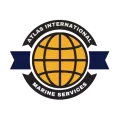Ports in the Baltic Sea Cut Emissions with Novel Maritime Traffic System

The Baltic Sea region has become a focal point for innovative maritime traffic systems designed to reduce emissions and enhance the efficiency of port operations.
Let’s delve into the various initiatives and technologies that have been implemented to achieve these goals.
Novel Traffic Management Systems
The introduction of the Port Activity App™, a product of the European ‘EfficientFlow’ project, has revolutionized the way port calls are coordinated.
This app allows cargo ships to update their schedules in real-time, leading to significant fuel savings and reduced carbon emissions.
The ports of Gävle and Rauma have successfully implemented this system, which has inspired the ‘Time Slot Gävle’ queuing management system, further optimizing operations.
The EfficientFlow project, which cost approximately €4.5 million, was largely funded by the EU Cohesion Policy and national contributions from Sweden and Finland.
Following its success, over a dozen Finnish ports have adopted similar traffic management solutions.
Green Technology and Alternative Fuels
The Baltic Sea region is also making strides in the adoption of green technology and alternative fuels.
The Copenhagen Malmö Port is working towards carbon neutrality by 2025, with a switch from fossil fuels to bio-diesel for all port-operating machines.
The Baltic Hub is on a path to reduce emissions by 50% by 2030 and aims to be zero-emission by 2050.
This includes the use of electric motors for cranes, the replacement of diesel-powered devices with hybrid ones, and the installation of charging stations for electric cars.
The terminal is also preparing for the implementation of onshore power supply for ships, which will contribute to zeroing emissions.
Collaborative Efforts and EU Projects
Collaboration is key in the Baltic Sea’s efforts to green the maritime industry.
Ports of Stockholm participates in various EU projects, such as the Policy Lab Urban Zjöfart and the coordinated supply of onshore power in Baltic seaports project.
The Baltic Ports Organization and other international associations like C40 Green Ports Forum and ESPO are instrumental in representing port interests and promoting environmental initiatives.
Regional Cooperation and Roadmaps
Enhanced regional cooperation has led to the creation of dedicated sub-groups like the GREEN TEAM, which promotes public and private cooperation to advance the development and uptake of green technology and alternative fuels in shipping.
A ‘Green Technology and Alternative Fuels Roadmap’ has been established to accelerate the use of green technologies in the Baltic.
Impact on Emissions and Air Quality
Maritime transport is responsible for a significant portion of global CO2 emissions, with the Baltic Sea region being no exception.
However, initiatives like the sulfur emission control area (SECA) and the upcoming nitrogen emission control area (NECA) are set to mitigate the environmental impact of shipping emissions.
The use of alternative fuels, such as liquefied natural gas (LNG), is being promoted to further reduce the ecological footprint of maritime transport.
Green Ports as a Sustainable Solution
Green ports are emerging as a sustainable solution for the maritime industry.
They incorporate renewable energy sources, shore power, low and zero-emission fuels, and smart technologies to minimize environmental impact.
The benefits of green ports extend beyond environmental gains to include social and economic advantages.
Ports are encouraged to develop strategies, engage with stakeholders, and monitor progress to become greener.
Conclusion
The Baltic Sea region’s ports are at the forefront of reducing emissions and enhancing maritime traffic efficiency through innovative systems and collaborative efforts.
These initiatives not only contribute to the sustainability of the maritime industry but also set a precedent for ports worldwide to follow.
Found this article interesting, and useful? Please feel free to interact, recommend and share.
If you have any questions about this topic or would like to discuss your own business needs, please contact us today!
Ports in the Baltic Sea Cut Emissions with Novel Maritime Traffic System Read More »
















